Transformational Life Technology: The Chrysallis Project
John: Hello everyone! We have a special show today. It’s a real honor to have Eric Brown with us, who is working on the Chrysallis project, as the business manager or the…
Eric: (Chuckles). Thanks, John. Good morning, everyone! If you were to put a title on me, it would be Business Development, as I’m in charge of the future direction and growth of the company. But, like in the early days of iAwake Technologies, we’re a small company, so there are four of us. At any given hour, I’m wearing seventeen different hats.
John: That’s what I love about start-ups— everybody does everything that needs to be done to get it going.
So, as I understand Chrysallis, it’s a kind of super app. I’m really excited about that. iAwake Technologies also has a part in this; Eric Thompson has created some very powerful tracks for this project. So, Eric, what exactly is Chrysallis?
Eric: We started Chrysallis under a very straightforward and simple premise: to do our part to help support people in living happier and healthier lives. There is an app component to what we do, but what we’ve built, and what underpins all of that, is an amazing platform to develop self-improvement programs. In our world, we call these programs “paths.” If you go to our website, you’ll see that everything revolves around a path. A path is simply a mini self-improvement program.
When you see how earnestly people are trying to affect positive change in their lives—well, we know how hard it is. Going back to the early days at Chrysallis, the tools that were readily available to us were a seminar, a DVD, or a book, right? They were ineffective for a myriad of reasons.
So, Chrysallis takes a different tack. We thought, let’s take the content that we all know and repackage it into self-improvement programs that are “mass-personalized,” because we have to keep in mind that each program has got to cater to John, to Pam, to Eric, to Javi, to Louie, to all the great members of iAwake, because we’re all different, and we all have unique ways of learning stuff.
So, it’s got to be mass personalized, and it should be delivered in bite-sized chunks. Change doesn’t happen overnight—we all know that—so an effective path to get there is to take on change, tied up to a goal, in reasonable chunks and little achievements along the way. One, because this is a more effective way for us to assimilate change on our way to embodying it, and two, it gives us a sense of achievement; we know we’re making progress towards who we want to become. Mass personalized, and step by step.
The third piece that really seems to make sense is to deliver these paths when people need them most, and that is on demand. So, we’re currently delivering the path via an app to mobile devices.
John: Awesome.
Eric: Our paths cover a wide swath of goals and areas of change that any one of us may be looking to affect. This will cover everything from mindfulness (and certainly meditation, which is via the Profound Meditation path that we developed with you guys, based on iAwake brain entrainment technology and soundtracks) and productivity, to raising thriving, emotionally stable families and to intimacy. Off the top of my head, I would say our paths probably target seven to nine major buckets of areas.
John: And do you intend to keep creating more paths? Or, as a person develops or works with it, does it becomes more individualized and personalized as you go along.
Eric: Well, as to the latter part of that question, John, we don’t have an answer yet, but my guess is that yes, over time, the personalization will get down to a level that will be truly extraordinary.
The answer to whether we will continue to develop new paths or programs is, yes. A core element of our thesis from day one has been that variety is absolutely fundamental to the success of Chrysallis—or to any of the companies in the transformational life technology world. We always have to be there to support whatever goal is most prominent in our members’ lives at any given time. I’ve been a Chrysallis member for a long time, and it’s fascinating how you start with one goal, or one area, and all of a sudden you find yourself in this flow cycle amongst the paths. One path runs into somewhere else; you go to a new path; you come back to the old path… So having that variety there to support any given goal is absolutely critical.
John: In my work with iAwake Technologies, Integral Recovery, and my personal work recovering from life-crippling depression, I’ve learned that if I practice—a daily, dedicated practice—whatever skill or whatever I want to develop, I can get into a zone, and I can achieve things way beyond what I thought I could ever achieve. Would this be something that Chrysallis would facilitate? In other words, giving it structure, so that one could really move into the zone of working on whatever skill one might feel called to develop to a high level?
Eric: Very much so, John. I couldn’t have said it better myself.
John: I call it the “Gospel of Practice.”
It used to be thought that, genetically, this is what you’ve got. Deal with it. If you’re naturally talented, you’re all set—as if Jimi Hendrix came out of the womb playing these incredible riffs. It’s not true. He was a fanatic. He was one of those guys who had the eye of the tiger, and he practiced and practiced. He practiced when he was sitting on the toilet. He practiced on the way to gigs. And in his time off, he would go from bar to bar, club to club, just jamming with people. He did it so much that in the three years that he was recording, he created a whole body of work that continues to blow our minds and inspire us today.
Eric: We see the storyline again and again of how the top performers, yes, are naturally talented, but the amount of practice and rigor that goes into that habit, that skill development, is what separates the top of the top from the everybody else.
John: Absolutely.
Eric: Let’s step away from the context of musical performance and put it into the context of emotional performance—our emotional fluency, our emotional stability, our connectedness. The level of consistent effort that is required there at the end of the day is no different. So, leveraging a program, whether it’s from iAwake or from Chrysallis, provides exactly that foundation to give you the steps, to give you the areas of focus to practice.
John: So Eric, How can people listening to this get started on Chrysallis?
Eric: My suggestion would be to go to our website, chrysall.is, and put a bit of legwork into what area to focus on; what is the most prominent change that you’re looking to make? After that, I would hover over the link that says “Paths,” in the upper right corner of our homepage, where you see the bucket into which all of the paths fit—whether the path is mindfulness, intimacy, or productivity. Then once you’ve got a sense of the direction you want to go, you dive into a path selection. I think, off the top of my head, we’ve got 32 paths.
Having a bit of forethought as to which area you want to focus on is absolutely fundamental to leveraging and getting the most out of the Chrysallis experience. I’m not saying that the first path you choose is necessarily going to be bang on correct, but give yourself a little bit of time to think about the direction you want to head. You might get into a path that’s not a great fit, we do that time and time again, but again, that’s why we have such a broad number of paths available.
Then you would scroll down to where there is a quick link to set up an account. You get an option to subscribe as either a monthly user at $9.99 or an annual subscription for $99. The first thirty days are free.
John: Is this something you would download to your desktop, or is it something that goes on your iPhone or your smartphone?
Eric: That’s a good question, John. For all accounts—setup account management, path selection, path download—that’s all done on the web. But the actual engagement, the actual interface with a Chrysallis path, would be on your mobile device.
John: So, I’ve got my free month and now what happens?
Eric: The path will automatically download to your phone, and you’ll bring up the Chrysallis app for the first time. You’ll see a home screen. There are a couple of key elements to the home screen; number one, at the top you’ll see your mood state. The very unique aspect of Chrysallis is that it provides support for the emotional state you happen to be in at any given time. As we all know, if John is happy, if John is stressed, if John is anxious, if John is mad or resistant, these all affect the path towards change that he is on at any given time. The intelligence of Chrysallis is that the way the path interacts with you is all-dependent upon your mood. So, the next step that the path might give you, if you check in as happy, will be remarkably different than if you were to check in as anxious or resistant.
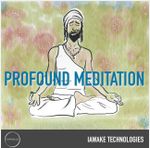 So, first you check in with your emotional state and then you will see what we call the “dust covers” for each path. And served up right next to the dust cover for a particular path, say Profound Meditation, is your current step or daily step for that path. You tap that once and it takes you through that step, that action for the day.
So, first you check in with your emotional state and then you will see what we call the “dust covers” for each path. And served up right next to the dust cover for a particular path, say Profound Meditation, is your current step or daily step for that path. You tap that once and it takes you through that step, that action for the day.
John: I would imagine that just acknowledging your current emotional state is already a step toward mindfulness. You’re actually consciously checking in with yourself about, “What am I feeling? Oh, I am feeling anxious!” and bam! You hit that, and just that simple step is a reinforcement of being self-aware.
Eric: Without a doubt. (Chuckles)
Eric: What underpins the paths is the Chrysallis design platform. You could look at it as AutoCAD for human behavior design. All of our stuff builds off this. So, for example, the wonderful experts at Integral Recovery have this amazing content that they want to be able to deliver to their clients. And this could go one of two ways. You could take your content, turn it over to us, and we would create a path for you, or there may be an opportunity to actually access the design platform yourself, build your path, and then distribute it. I think in this way, we’re going to see a lot of expert content move into the world—by allowing them access, not necessarily strictly to our stuff.
John: A lot of us look at the future and say, “Is this going to be a good story or a bad story? Is it going to be one of those apocalyptic movies that we’re always seeing? Or is it going to evolve into a more hopeful, more beautiful future?”
By using this stuff and actually taking responsibility and doing the work with the best tools available, then we can start tipping toward that more positive, creative, potential future that’s waiting for us, and in some ways, we’re creating that right now, even in this conversation.
Eric: That is certainly the drum that we’re marching to.
John: Brilliant. Okay, thank you so much, Eric.
___________________________________________________________________________
Adapted from iAwake Technologies’ free, weekly teleconference call on April 16, 2014.
Join our weekly calls!
To receive information on how to join the weekly iAwake coaching calls that John leads, sign up for the free meditation download and you’ll be put on the email list. You can also access the phone-in information on our Teleseminar page.
___________________________________________________________________________
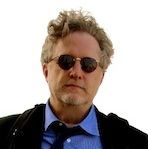 John Dupuy is the CEO of iAwake Technologies and the founder of Integral Recovery, a holistic addiction treatment approach inspired by Ken Wilber’s Integral Model. He is also the author of Integral Recovery: A Revolutionary Approach to Alcoholism and Addiction, published by SUNY Press, and on the faculty of the Integral Recovery Institute, which offers an online certification course in Integral Recovery Therapy. As a pioneer in the use of brainwave entrainment in therapy and personal development, John has dedicated his life to helping others deepen their spiritual practice and transform their lives.
John Dupuy is the CEO of iAwake Technologies and the founder of Integral Recovery, a holistic addiction treatment approach inspired by Ken Wilber’s Integral Model. He is also the author of Integral Recovery: A Revolutionary Approach to Alcoholism and Addiction, published by SUNY Press, and on the faculty of the Integral Recovery Institute, which offers an online certification course in Integral Recovery Therapy. As a pioneer in the use of brainwave entrainment in therapy and personal development, John has dedicated his life to helping others deepen their spiritual practice and transform their lives.
___________________________________________________________________________
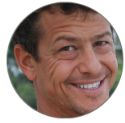 Eric Brown is in charge of Business Development at Chrysallis. He joined the “C Team” after serving on the company’s board. He is fond of saying that “the Chrysallis tractor beam was just too strong…” and that joining the company in an operational role was a foregone conclusion should the offer emerge. His career spans business development roles in both the technology and investment management industries. He looks to support founding teams creating technologies, products, and services designed to improve the quality of people’s lives.
Eric Brown is in charge of Business Development at Chrysallis. He joined the “C Team” after serving on the company’s board. He is fond of saying that “the Chrysallis tractor beam was just too strong…” and that joining the company in an operational role was a foregone conclusion should the offer emerge. His career spans business development roles in both the technology and investment management industries. He looks to support founding teams creating technologies, products, and services designed to improve the quality of people’s lives.
___________________________________________________________________________
Leave a Comment
You must be logged in to post a comment.

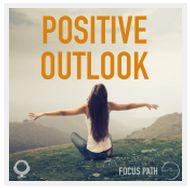

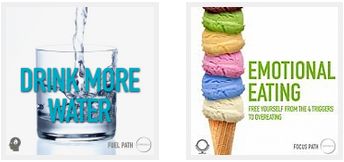
Leave your comments below